A Nation’s Shadow at Bears Ears National Monument

From the top of the Bears Ears in southern Utah, Cedar Mesa unfolds to the south, a 250,000 acre stretch of wild lands incised by a labyrinth of canyons largely hidden from this elevated view. Streams flowing across the mesa patiently cut their way through its soft sandstone core, carrying water and sediment to the San Juan River.
Last spring, I sat on top of the Bears Ears, took in the view, and daydreamed about deep time and the end of fossil fuel extraction. Then I walked down to the mesa below and spent the next ten days wandering the newly declared, now undeclared, Bears Ears National Monument. Cliff dwellings, kivas, petroglyphs, and pot shards narrate the long human history there. Deep canyons, plentiful springs, deer tracks, and riotous plays of light tell a more-than-human story.

Countless petroglyph and pictograph panels dot the Bears Ears landscape. Photograph by Charles Carlin, 2017. See below for a full gallery.
I walked to say thank you to this place that has been home to people for more than 10,000 years and played host to tectonic dramas that fling mountains into the sky just to watch them slowly tumble into the sea once again. I walked to steep in gratitude for the tribal leaders, adventurers, and organizers who made the monument designation possible. I also went to grieve the wounds inflicted on the landscape: the looting and pillaging of Ancestral Puebloan homes, uranium mining, cattle grazing, and roads crisscrossing the mesa tops.
***

The author’s camp on a sandstone bench above the canyon bottom. Photograph by Charles Carlin, 2017. See below for a full gallery.
President Barack Obama designated 1.3 million acres of southern Utah as the Bears Ears National Monument in December 2016. Although efforts to protect the land date back at least 70 years, the movement really gained steam in 2015 when an inter-Tribal coalition of five Native nations—Hopi, Navajo, Ute Mountain, Pueblo of Zuni, and Ute Indian—asked the federal government to protect the land around the Bears Ears. Sally Jewell, the Secretary of the Interior at the time, listened and then helped to develop a plan in which the Bureau of Land Management would manage the land in consultation with the Native coalition.
America’s public lands protect some of the world’s most stunning landscapes from extractive industries and development. They are, however, also caught up in a centuries-long history of violent dispossession of Native peoples from the land. The new Bears Ears monument not only protected the land and the climate from oil and gas extraction, it also signaled an opportunity to begin tending to the open wounds of colonialism.
But just one year later, President Trump eviscerated the monument, cutting its area by 85 percent. Five Native nations, a dozen conservation groups, and major outdoor companies immediately filed lawsuits challenging Trump’s move. The lawsuits argue that the Antiquities Act gives a president the authority to declare monuments, not to substantially reduce or erase them. It quickly became clear that enabling fossil fuel extraction was a key motivator for the administration’s decision. Many have also argued that the current administration has little interest in acknowledging, let alone working with, Native nations. Shrinking the monument boundaries pushed the Navajo, Hopi, Pueblo of Zuni, and Ute Nations to the margins once again.
***
Wild places raise existential questions as well as political ones. What part of my soul lives in this quiet, windswept land now caught up in one of the fiercest public lands battles of our time? How do I discern a language that speaks in the rhythm of walking, the chatter of birds, and the ineffable presence of previous generations? The questions are mostly unanswerable, of course. It’s their asking that brings those moments of grace that my memories tell me I find in wild places.
Wild places raise existential questions as well as political ones. What part of my soul lives in this quiet, windswept land now caught up in one of the fiercest public lands battles of our time?
A week or so into my walk, I found that moment of grace.
I sat stream-side in a quiet canyon and watched the sunset light the canyon wall on fire before it dipped below the horizon. The ravens flew above, doing barrel-rolls, honking and croaking in their Utah dialect. I felt the wind shift and blow up the canyon with the dusk. My stiff and sore back relaxed into the warm sandstone. Gratitude, wonder, and grief filled my being and I wept. It was a good day.
***
Leslie Marmon Silko describes landscapes and their histories as a “bundle of stories” that resemble dreams. Physical journeys through the landscape are also mythical journeys through the individual and collective soul, “an interior process of the imagination” that “cannot be reckoned in physical miles.” To say that Cedar Mesa holds a part of my soul is not a metaphorical statement. It is an affirmation that one’s being is not just connected to the landscape, it is the landscape.
Every myth and every soul has a shadow, too. The landscape whispers a numinous tale in the dreams of ravens, humans, rocks, and water, but its story also courses through public debate, asking what will become of it and of us. The shadow cast by the Bears Ears poking above the horizon is also the shadow of our culture’s mythos, a dreamed of, but never achieved, conquest of people and the more-than-human landscapes that hold all of us.
Today’s fight over the future of the monument brings that shadow into sharp relief. Will the land below the Bears Ears become dotted with pump jacks and poisoned holding ponds? Or will our care of the land tell a story of healing and gesture towards reparations?
The latest round of American culture and resource wars makes Cedar Mesa a battleground as well as a refuge, a place of responsibility as well as respite. Our wild lands have always been Janus-faced, of course, places of healing for some and wounding for others. But at the Bears Ears, the stakes have been raised and the allies of wild places are gathering. Get out there, get lost, laugh and weep at the beauty, then come home and fight like hell to make sure others can do the same.
Click images below to enlarge. All photographs by Charles Carlin, 2017.
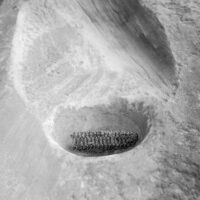
Featured image: Looking north across Cedar Mesa. The Bears Ears are visible on the horizon. Photograph by Charles Carlin, 2017.
Charles Carlin is a PhD candidate in the Department of Geography at the University of Wisconsin–Madison and a wilderness guide. He is interested in how ethics and the philosophy of subjectivity intersect with the messy realities of life. These interests come together in Charles’ dissertation entitled, “The Therapeutics of Subjectivity: Nature, Ethics, and Ceremony in the American Wilderness.” Wild places in America have been sites of vicious dispossession and exclusion, but they are also places where scholars, activists, and wanderers have developed radical ecological ethics and politics through stunning experiences with the more-than-human world. His last contribution to Edge Effects was “The Best of End Times: A Conversation with Anna Tsing” (September 2017). Charles lives in Madison, Wisconsin, with his wife and son. Website. Contact.


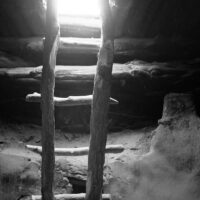
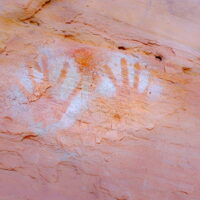
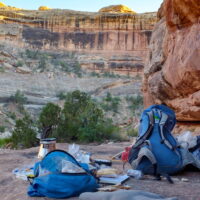
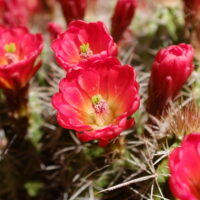

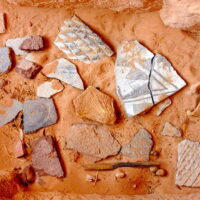

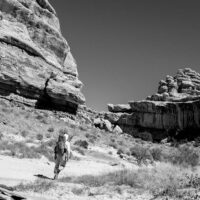
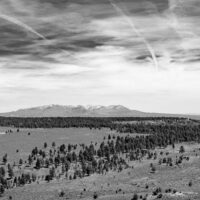
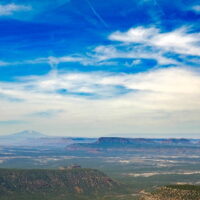
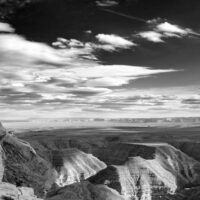
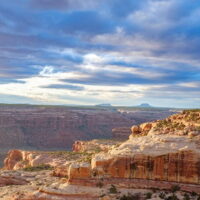
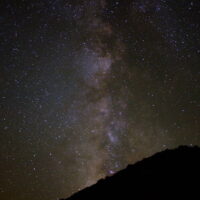
You must be logged in to post a comment.